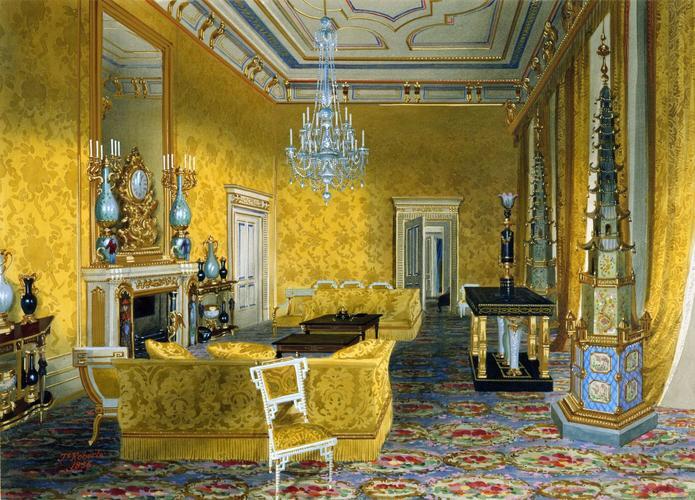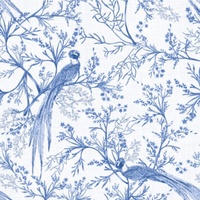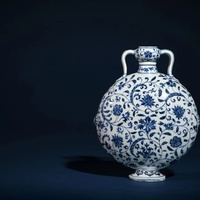The Penthouse, History
The Penthouse's distinct East Asian decorative influences make the model truly captivating, as you will see in many newspapers covering the exhibit during the mid-20th century:
![<a href="/omeka/items/browse?advanced%5B0%5D%5Belement_id%5D=50&advanced%5B0%5D%5Btype%5D=is+exactly&advanced%5B0%5D%5Bterms%5D=A+Photograph+of+a+Newspaper+Clipping+from+an+article%2C+%22Miniature+Collection+of+Rooms+Complete+to+Slightest+Detail%2C%22+found+in+Mrs.+Fisher%27s+Scrapbook+1%2C+page+27%2C+%5Bca.+1950s%5D">A Photograph of a Newspaper Clipping from an article, "Miniature Collection of Rooms Complete to Slightest Detail," found in Mrs. Fisher's Scrapbook 1, page 27, [ca. 1950s]</a> <a href="/omeka/items/browse?advanced%5B0%5D%5Belement_id%5D=50&advanced%5B0%5D%5Btype%5D=is+exactly&advanced%5B0%5D%5Bterms%5D=A+Photograph+of+a+Newspaper+Clipping+from+an+article%2C+%22Miniature+Collection+of+Rooms+Complete+to+Slightest+Detail%2C%22+found+in+Mrs.+Fisher%27s+Scrapbook+1%2C+page+27%2C+%5Bca.+1950s%5D">A Photograph of a Newspaper Clipping from an article, "Miniature Collection of Rooms Complete to Slightest Detail," found in Mrs. Fisher's Scrapbook 1, page 27, [ca. 1950s]</a>](https://omeka.wilkes.edu/omeka/files/fullsize/aee0af058e118c5e4d5e83f6a4bf1d4b.jpg)
The following depicts a newspaper clipping article "Many Persons See Exhibit," detailing an introduction to the penthouse in Mrs. Fisher's dollhouse.
![<a href="/omeka/items/browse?advanced%5B0%5D%5Belement_id%5D=50&advanced%5B0%5D%5Btype%5D=is+exactly&advanced%5B0%5D%5Bterms%5D=A+Left+Hand+Corner+View+of+the+Penthouse%2C+created+by+Mrs.+Fisher%2C+%5Bca.+1940s-1950s%5D">A Left Hand Corner View of the Penthouse, created by Mrs. Fisher, [ca. 1940s-1950s]</a> <a href="/omeka/items/browse?advanced%5B0%5D%5Belement_id%5D=50&advanced%5B0%5D%5Btype%5D=is+exactly&advanced%5B0%5D%5Bterms%5D=A+Left+Hand+Corner+View+of+the+Penthouse%2C+created+by+Mrs.+Fisher%2C+%5Bca.+1940s-1950s%5D">A Left Hand Corner View of the Penthouse, created by Mrs. Fisher, [ca. 1940s-1950s]</a>](https://omeka.wilkes.edu/omeka/files/fullsize/5e6183ee1dc5886a52fa688ab5b5fe60.jpg)
Even our own beloved Kirby Hall makes mention:
In a 1955 Life Magazine collected by Mrs. Fisher for her scrapbooks (1 & 2), they explain some of the early markers that saw the development of a style that would become Chinoiserie. Chinoiserie style was a 17th century European decorative style which gained popularity during the 19th and 20th centuries. The design aspects of this style were often a romanticized interpretation of Asian culture, art, and architecture—namly of China, but also Japan and Southeast Asia.
Below are some examples of the design.

The Yellow Drawing Room at Buckingham Palace, 1855 James Roberts (ca. 1800-67) Royal Collection Trust; ACD Sept. 2025
![<a href="/omeka/items/browse?advanced%5B0%5D%5Belement_id%5D=50&advanced%5B0%5D%5Btype%5D=is+exactly&advanced%5B0%5D%5Bterms%5D=Image+of+a+Living+Room+Decorated+in+the+Chinoiserie+style%0D%0AScrapbook+2%2C+page+26%2C+collected+by+Mrs.+Fisher%2C+%5Bca.+1940s-1950s%5D%0D%0A">Image of a Living Room Decorated in the Chinoiserie style<br />
Scrapbook 2, page 26, collected by Mrs. Fisher, [ca. 1940s-1950s]<br />
</a> <a href="/omeka/items/browse?advanced%5B0%5D%5Belement_id%5D=50&advanced%5B0%5D%5Btype%5D=is+exactly&advanced%5B0%5D%5Bterms%5D=Image+of+a+Living+Room+Decorated+in+the+Chinoiserie+style%0D%0AScrapbook+2%2C+page+26%2C+collected+by+Mrs.+Fisher%2C+%5Bca.+1940s-1950s%5D%0D%0A">Image of a Living Room Decorated in the Chinoiserie style<br />
Scrapbook 2, page 26, collected by Mrs. Fisher, [ca. 1940s-1950s]<br />
</a>](https://omeka.wilkes.edu/omeka/files/fullsize/1122e14b5e9ab875ab9f217d728dde8c.jpg)
A photograph of a living room decroated in the Chinoiserie style, clipped in Mrs. Fisher's Scrapbook #2.
The movement in the U.S. never achieved an accurate or true representation however, only ever representing a Western fantasy of what Eastern culture was through the imports they were captivated by: such as porcelain or silk.

Chinoiserie Pattern
Adobe Stock; ACD Sept. 2025
And yet, it would follow in the footsteps of the Victorian inspiration for the parlor, coming to be recognized as a symbol of cosmopolitanism and luxury.
![<a href="/omeka/items/browse?advanced%5B0%5D%5Belement_id%5D=50&advanced%5B0%5D%5Btype%5D=is+exactly&advanced%5B0%5D%5Bterms%5D=A+Photograph+of+a+Newspaper+Clipping%2C+from+an+article%2C+%22Hobbyist+with+a+Heart%2C%22+clipped+by+Mrs.+Fisher%2C+Scrapbook+1%2C+%5Bca.+1940s-1950s%5D">A Photograph of a Newspaper Clipping, from an article, "Hobbyist with a Heart," clipped by Mrs. Fisher, Scrapbook 1, [ca. 1940s-1950s]</a> <a href="/omeka/items/browse?advanced%5B0%5D%5Belement_id%5D=50&advanced%5B0%5D%5Btype%5D=is+exactly&advanced%5B0%5D%5Bterms%5D=A+Photograph+of+a+Newspaper+Clipping%2C+from+an+article%2C+%22Hobbyist+with+a+Heart%2C%22+clipped+by+Mrs.+Fisher%2C+Scrapbook+1%2C+%5Bca.+1940s-1950s%5D">A Photograph of a Newspaper Clipping, from an article, "Hobbyist with a Heart," clipped by Mrs. Fisher, Scrapbook 1, [ca. 1940s-1950s]</a>](https://omeka.wilkes.edu/omeka/files/fullsize/3f91d69b94c6cb2ad8f26147571ad993.jpg)
![<a href="/omeka/items/browse?advanced%5B0%5D%5Belement_id%5D=50&advanced%5B0%5D%5Btype%5D=is+exactly&advanced%5B0%5D%5Bterms%5D=A+Front+Facing+View+of+the+Penthouse%2C+created+by+Mrs.+Fisher%2C+%5Bca.+1940s-1950s%5D">A Front Facing View of the Penthouse, created by Mrs. Fisher, [ca. 1940s-1950s]</a> <a href="/omeka/items/browse?advanced%5B0%5D%5Belement_id%5D=50&advanced%5B0%5D%5Btype%5D=is+exactly&advanced%5B0%5D%5Bterms%5D=A+Front+Facing+View+of+the+Penthouse%2C+created+by+Mrs.+Fisher%2C+%5Bca.+1940s-1950s%5D">A Front Facing View of the Penthouse, created by Mrs. Fisher, [ca. 1940s-1950s]</a>](https://omeka.wilkes.edu/omeka/files/fullsize/cfe791b3ce944d2c201079fb592fef4b.jpg)
![<a href="/omeka/items/browse?advanced%5B0%5D%5Belement_id%5D=50&advanced%5B0%5D%5Btype%5D=is+exactly&advanced%5B0%5D%5Bterms%5D=A+Photograph+of+a+Newspaper+Clipping+from+an+article%2C+%22Many+Persons+See+Exhibit%2C%22+clipped+in+Scrapbook+1%2C+page+27+by+Mrs.+Fisher%2C+%5Bca.+1950s%5D">A Photograph of a Newspaper Clipping from an article, "Many Persons See Exhibit," clipped in Scrapbook 1, page 27 by Mrs. Fisher, [ca. 1950s]</a> <a href="/omeka/items/browse?advanced%5B0%5D%5Belement_id%5D=50&advanced%5B0%5D%5Btype%5D=is+exactly&advanced%5B0%5D%5Bterms%5D=A+Photograph+of+a+Newspaper+Clipping+from+an+article%2C+%22Many+Persons+See+Exhibit%2C%22+clipped+in+Scrapbook+1%2C+page+27+by+Mrs.+Fisher%2C+%5Bca.+1950s%5D">A Photograph of a Newspaper Clipping from an article, "Many Persons See Exhibit," clipped in Scrapbook 1, page 27 by Mrs. Fisher, [ca. 1950s]</a>](https://omeka.wilkes.edu/omeka/files/fullsize/5c06f858b86865a0c3396fa330844a6a.jpg)
![<a href="/omeka/items/browse?advanced%5B0%5D%5Belement_id%5D=50&advanced%5B0%5D%5Btype%5D=is+exactly&advanced%5B0%5D%5Bterms%5D=A+Right+Hand+Corner+of+the+Penthouse%2C+created+by+Mrs.+Fisher%2C+%5Bca.+1940s-1950s%5D">A Right Hand Corner of the Penthouse, created by Mrs. Fisher, [ca. 1940s-1950s]</a> <a href="/omeka/items/browse?advanced%5B0%5D%5Belement_id%5D=50&advanced%5B0%5D%5Btype%5D=is+exactly&advanced%5B0%5D%5Bterms%5D=A+Right+Hand+Corner+of+the+Penthouse%2C+created+by+Mrs.+Fisher%2C+%5Bca.+1940s-1950s%5D">A Right Hand Corner of the Penthouse, created by Mrs. Fisher, [ca. 1940s-1950s]</a>](https://omeka.wilkes.edu/omeka/files/fullsize/79bc2e71c80efff01aff387f0c544e3f.jpg)
![<a href="/omeka/items/browse?advanced%5B0%5D%5Belement_id%5D=50&advanced%5B0%5D%5Btype%5D=is+exactly&advanced%5B0%5D%5Bterms%5D=A+Photograph+of+a+Clipping+from+an+article+entitled+%22Her+Hobby+Helps+the+Handicapped%2C%22+clipped+by+Mrs.+Fisher%2C+%5Bno+date%5D">A Photograph of a Clipping from an article entitled "Her Hobby Helps the Handicapped," clipped by Mrs. Fisher, [no date]</a> <a href="/omeka/items/browse?advanced%5B0%5D%5Belement_id%5D=50&advanced%5B0%5D%5Btype%5D=is+exactly&advanced%5B0%5D%5Bterms%5D=A+Photograph+of+a+Clipping+from+an+article+entitled+%22Her+Hobby+Helps+the+Handicapped%2C%22+clipped+by+Mrs.+Fisher%2C+%5Bno+date%5D">A Photograph of a Clipping from an article entitled "Her Hobby Helps the Handicapped," clipped by Mrs. Fisher, [no date]</a>](https://omeka.wilkes.edu/omeka/files/fullsize/b9bdbe99220e0d1d5319ea9e0163a12b.jpg)
![<a href="/omeka/items/browse?advanced%5B0%5D%5Belement_id%5D=50&advanced%5B0%5D%5Btype%5D=is+exactly&advanced%5B0%5D%5Bterms%5D=A+Photograph+of+a+Newspaper+Clipping+Advertisement+for+the+Showing+of+Mrs.+Fisher%27s+Dollhouse+at+Wilkes+College%2C+Kirby+Hall%2C+%5Bca.+1950s-1960s%5D">A Photograph of a Newspaper Clipping Advertisement for the Showing of Mrs. Fisher's Dollhouse at Wilkes College, Kirby Hall, [ca. 1950s-1960s]</a> <a href="/omeka/items/browse?advanced%5B0%5D%5Belement_id%5D=50&advanced%5B0%5D%5Btype%5D=is+exactly&advanced%5B0%5D%5Bterms%5D=A+Photograph+of+a+Newspaper+Clipping+Advertisement+for+the+Showing+of+Mrs.+Fisher%27s+Dollhouse+at+Wilkes+College%2C+Kirby+Hall%2C+%5Bca.+1950s-1960s%5D">A Photograph of a Newspaper Clipping Advertisement for the Showing of Mrs. Fisher's Dollhouse at Wilkes College, Kirby Hall, [ca. 1950s-1960s]</a>](https://omeka.wilkes.edu/omeka/files/fullsize/ed4d1df04ad48e2ee88832a0180dd7fd.jpg)
![<a href="/omeka/items/browse?advanced%5B0%5D%5Belement_id%5D=50&advanced%5B0%5D%5Btype%5D=is+exactly&advanced%5B0%5D%5Bterms%5D=A+Magazine+Clipping+from+a+Life+Magazine%2C+collected+by+Mrs.+Fisher%2C+%5Bca.+1940s-1950s%5D">A Magazine Clipping from a Life Magazine, collected by Mrs. Fisher, [ca. 1940s-1950s]</a> <a href="/omeka/items/browse?advanced%5B0%5D%5Belement_id%5D=50&advanced%5B0%5D%5Btype%5D=is+exactly&advanced%5B0%5D%5Bterms%5D=A+Magazine+Clipping+from+a+Life+Magazine%2C+collected+by+Mrs.+Fisher%2C+%5Bca.+1940s-1950s%5D">A Magazine Clipping from a Life Magazine, collected by Mrs. Fisher, [ca. 1940s-1950s]</a>](https://omeka.wilkes.edu/omeka/files/fullsize/8e7d58e52ab3974b4cd2a30168f669f4.jpg)
